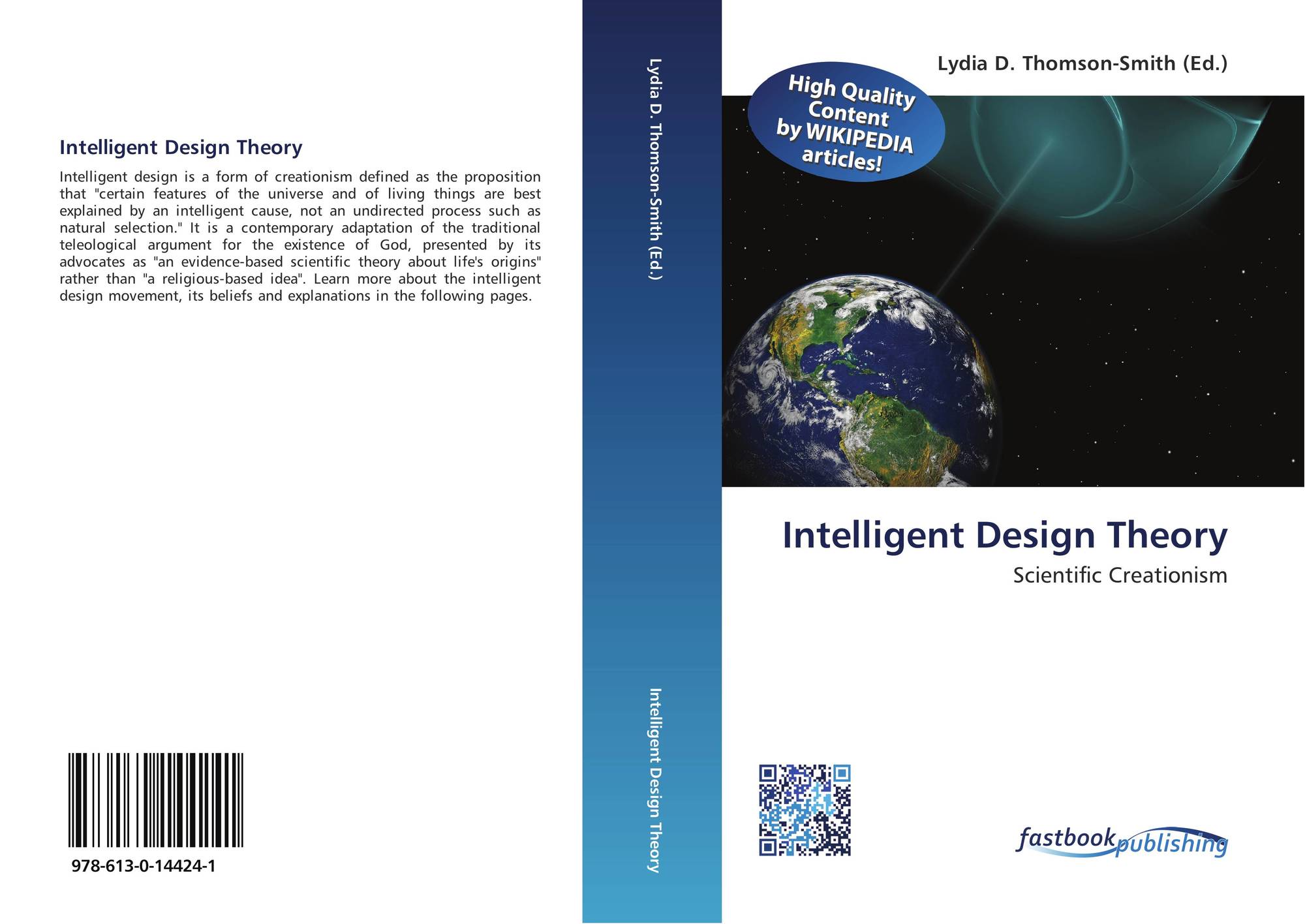Table Of Content
- The Fine-Tuning of the Universe
- How do you explain our genetic relatedness with chimpanzees?
- God or nature
- IDEA brings together the most imaginative entertainment and gaming industry creatives for each project’s needs.
- Is Intelligent Design Creationism?
- Sean ‘Diddy’ Combs seeks dismissal of revenge porn, human trafficking claims in lawsuit

But even more significant are our cognitive and communicative abilities. Our capacity for abstract thought, self-conscious reflection, and ability to communicate put us in another category entirely. These attributes are orders of magnitude more complex than anything animals can do.
The Fine-Tuning of the Universe
Sustainable interior design: A new approach to intelligent design and automated manufacturing based on Grasshopper - ScienceDirect.com
Sustainable interior design: A new approach to intelligent design and automated manufacturing based on Grasshopper.
Posted: Sun, 06 Aug 2023 07:26:55 GMT [source]
One irreducibly complex biochemical system that Behe considers is the bacterial flagellum. The flagellum is an acid-powered rotary motor with a whip-like tail that spins at twenty-thousand revolutions per minute and whose rotating motion enables a bacterium to navigate through its watery environment. Because a sign is not the thing signified, intelligent design does not presume to identify the purposes of a designer. Intelligent design focuses not on the designer’s purposes (the thing signified) but on the artifacts resulting from a designer’s purposes (the sign). What a designer intends or purposes is, to be sure, an interesting question, and one may be able to infer something about a designer’s purposes from the designed objects that a designer produces.
How do you explain our genetic relatedness with chimpanzees?
Intelligent by design: Human experience creates better AI - Toronto Star
Intelligent by design: Human experience creates better AI.
Posted: Wed, 07 Feb 2024 08:00:00 GMT [source]
Therefore, a more complex species -- one that contains more information -- could not have evolved from a less complex species [ref]. In biology, Behe sees the bacterial flagellum as an irreducibly complex system. I'm glad for an opportunity to explain the wedge strategy, because I conceived it. I know it can be made to sound like something sinister and conspiratorial. But the wedge strategy as I have explained it is quite simple and innocent. We need somebody who can get a debate started, and then we need people who have the expertise to answer the questions that come up as the debate gets started.
God or nature
Finally, in the early 1990s, precise measurements from NASA’s Cosmic Background Explorer (COBE) satellite indicated that the universe was filled with radiation having the exact properties predicted by the Big Bang theory. The next time an ambulance drives past with its siren blaring, pay attention to the pitch of the sound. As the ambulance approaches, the pitch is high, but then as it screams past, the pitch suddenly drops. He has produced over 20 movies and TV shows, managing thousands of employees in the process.
Frequently Asked Questions About "Intelligent Design"

Larry Witham provides the best overview of intelligent design, even-handedly treating its scientific, cultural, and religious dimensions. As a journalist, Witham has personally interviewed all the main players in the debate over intelligent design and allows them to tell their story. For intelligent design’s place in the science and religion dialogue, see Giberson and Yerxa. For histories of the intelligent design movement, see Woodward (a supporter) and Forrest (a critic). See Behe and Dembski to overview intelligent design’s scientific research program.
It's understood that if you want to be about science, you have to be supportive of this theory. So that's been going on all these years, and yet the people are not convinced. The mandarins of science, the high priests at the university level, will tell you it's because the people are ignorant and prejudiced.
IDEA brings together the most imaginative entertainment and gaming industry creatives for each project’s needs.
They could have been serving other purposes when they were chosen as advantageous for their current function. And so in that sense, just as I'm in a sense the father of the intelligent-design movement, I'm the father of the wedge concept. In the sense in which I have explained it, that it is a matter of my particular kind of logical arguing expertise at the beginning, to be supplemented and eventually replaced by [the expertise of] people with greater scientific knowledge and competence. That's the metaphysics of religion and science that is taken for granted in the universities. So while there can be arguments over the details, there can be no argument or discussion over the fundamental principle that only natural—which is to say unintelligent—causes were involved.
For example, forensic scientists and pathologists regularly determine whether a death was due to natural causes or intelligent causes. If somebody dies of a purported heart failure, and then they do an autopsy on the body and find signs of arsenic poisoning, they say this was not a death by natural causes; it was a poisoning. Say we have almost 99 percent of our genes in common with chimpanzees. We also have at least 25 percent of our genes in common with bananas. Do they point to a common evolutionary process or a common creator? Now, at this point the absolute certainty, the dogmatic insistence with which the Darwinists told their story, began to have a boomerang effect.
For Kant, the design argument legitimately establishes an architect (that is, an intelligent cause whose contrivances are constrained by the materials that make up the world), but it can never establish a creator who originates the very materials that the architect then fashions. The combination of complexity and specification convincingly pointed the radio astronomers in the movie Contact to an extraterrestrial intelligence. Note that the evidence was purely circumstantial — the radio astronomers knew nothing about the aliens responsible for the signal or how they transmitted it. Design theorists contend that specified complexity provides compelling circumstantial evidence for intelligence. Accordingly, specified complexity is a reliable empirical marker of intelligence in the same way that fingerprints are a reliable empirical marker of an individual’s presence. Moreover, design theorists argue that purely material factors cannot adequately account for specified complexity.
That’s the rock bottom question here, and there simply is no consensus—neither among Christians nor even among atheists, for that matter. I defended it myself several years ago in a brief exchange with Phillip Johnson, who had written a letter in reply to my review of three ID books, including one of his, which ran as a cover story for Reports of the National Center for Science Education. Dive deep into the peer-reviewed biochemistry, paleontology, and cosmology that supports intelligent design. According to Dembski, a biological system is clearly designed if it exhibits specified complexity. In this article, the term "scientific community" means the body of working scientists in the world who have published in peer-reviewed journals, utilize widely accepted scientific principles and are actively applying the scientific method in laboratory settings.
Insurance fraud investigators detect certain “cheating patterns” that suggest intentional manipulation of circumstances rather than natural disasters. Cryptographers distinguish between random signals and those that carry encoded messages. Dembski’s work showed that recognizing the activity of intelligent agents constitutes a common and fully rational mode of inference.
I know quite a bit more about the history of each of the other four positions I’ve presented, and (to be frank) I would rather punt this one, referring readers to several histories of ID by authors more qualified than me on this particular topic. An excellent place to start is an article about Phillip Johnson’s unique place in the development of ID, written by historian Donald Yerxa, whose book (with physicist Karl Giberson) Species of Origins came out a few months later. Consequently, at least a few important ID authors are not Christians. Here the best known example is undoubtedly Jonathan Wells (read more here and here), a follower of the late Rev. Sun Myung Moon. The recipient of earned doctorates in both Molecular and Cell Biology (Berkeley) and Religious Studies (Yale), he also has a degree from the Unification Theological Seminary (Barrytown, NY).
They simply don’t believe that miracles can be part of scientific explanations. Even proponents of the YEC view don’t invoke miracles in what they call “operation science” (or “experimental science” or “ordinary science”), reserving them only for “origin science” (or “historical science”). Numerous predators eat their prey alive; parasites destroy their living hosts from within; in many species of spiders and insects, the females devour their mates.
Creationism typically starts with a religious text and tries to see how the findings of science can be reconciled to it. Intelligent design starts with the empirical evidence of nature and seeks to ascertain what inferences can be drawn from that evidence. Unlike creationism, the scientific theory of intelligent design does not claim that modern biology can identify whether the intelligent cause detected through science is supernatural.

No comments:
Post a Comment